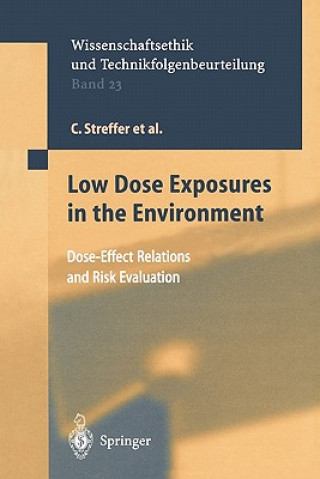
Kód: 01651236
Low Dose Exposures in the Environment
Autor C. Streffer, H. Bolt, D. Follesdal, P. Hall
The ever-increasing release of harmful agents due to human activities has led in some areas of the world to heavy pollution. In order to protect human health and the environment, environmental standards that shall limit the releas ... celý popis
- Jazyk:
 Angličtina
Angličtina - Väzba: Brožovaná
- Počet strán: 471
Nakladateľ: Springer, Berlin, 2010
- Viac informácií o knihe

70.71 €

Skladom u dodávateľa v malom množstve
Odosielame za 12 - 15 dní
Potrebujete viac kusov?Ak máte záujem o viac kusov, preverte, prosím, najprv dostupnosť titulu na našej zákazníckej podpore.
Pridať medzi želanie
Mohlo by sa vám tiež páčiť
-

Cervantes' Christian Romance
114.15 € -

Life Too Short
12.25 € -23 % -

Interfaith Just Peacemaking
139.29 € -

Coalition Politics and Democratic Consolidation in Asia
159.53 € -

Framing Intersectionality
68.57 € -

Advanced Design Problems in Aerospace Engineering
214.20 € -

128 Colors
39.64 € -10 %
Darčekový poukaz: Radosť zaručená
- Darujte poukaz v ľubovoľnej hodnote, a my sa postaráme o zvyšok.
- Poukaz sa vzťahuje na všetky produkty v našej ponuke.
- Elektronický poukaz si vytlačíte z e-mailu a môžete ho ihneď darovať.
- Platnosť poukazu je 12 mesiacov od dátumu vystavenia.
Viac informácií o knihe Low Dose Exposures in the Environment
Nákupom získate 175 bodov
 Anotácia knihy
Anotácia knihy
The ever-increasing release of harmful agents due to human activities has led in some areas of the world to heavy pollution. In order to protect human health and the environment, environmental standards that shall limit the release and the concentration of those toxic agents in the environment and hence the exposure to it have to be established. The related assessment and decision-making procedures have to be based on solid scientific data about the effects and mechanisms of these agents as well as on ethical, social and economic aspects. For risk evaluation, the knowledge of the dose response curve is an essential prerequisite. Dose responses without a threshold dose are most critical in this connection. Such dose responses are assumed for mutagenic and carcinogenic effects, which, therefore, dominate also the discussion in this book. In the environmentally important low dose range, risk estimation can only be achieved by extrapolation from higher doses with measurable effects. The extrapolation is accompanied with uncertainties which makes risk evaluation as well as risk communication frequently problematic. In order to ensure rational efficient and fair decisions beyond a sound scientific assessment the dialogue between disciplines, with the affected people and with the general public is necessary. In this book, the whole range of relevant and essential aspects of risk evaluation and standard setting is addressed. Starting with the ethical foundations, the sound analysis of recent scientific findings sets the frame for further reflections by theory of cognition, psychosocial sciences, and jurisprudence. The authors end up with concluding recommendations for coping with the recent problems of standard setting in the field of environmentally relevant low doses. The book is designed to a readership of scientists, legislators, administrators, and the interested public.The ever-increasing release of harmful agents due to human activities have led in some areas of the world to heavy pollution. In order to protect human health and the environment, environmental standards that shall limit the release and the concentration of those toxic agents in the environment and hence the exposure to it have to be established. The related assessment and decision-making procedures have to be based on solid scientific data about the effects and mechanisms of these agents as well as on ethical, social and economic aspects. For risk evaluation, the knowledge of the dose response curve is an essential prerequisite. Dose responses without a threshold dose are most critical in this connection. Such dose responses are assumed for mutagenic and carcinogenic effects, which, therefore, dominate also the discussion in this book. In the environmentally important low dose range, risk estimation can only be achieved by extrapolation from higher doses with measurable effects. The extrapolation is accompanied with uncertainties which makes risk evaluation as well as risk communication frequently problematic. In order to ensure rational efficient and fair decisions beyond a sound scientific assessment the dialogue between disciplines, with the affected people and with the general public is necessary. In this book, the whole range of relevant and essential aspects of risk evaluation and standard setting is addressed. Starting with the ethical foundations, the sound analysis of recent scientific findings sets the frame for further reflections by theory of cognition, psychosocial sciences, and jurisprudence. The authors end up with concluding recommendations for coping with the recent problems of standard setting in the field of environmentally relevant low doses. The book is designed to a readership of scientists, legislators, administrators, and the interested public.
 Parametre knihy
Parametre knihy
Zaradenie knihy Knihy po anglicky Earth sciences, geography, environment, planning The environment Social impact of environmental issues
70.71 €
- Celý názov: Low Dose Exposures in the Environment
- Podnázov: Dose-Effect Relations and Risk Evaluation
- Autor: C. Streffer, H. Bolt, D. Follesdal, P. Hall
- Jazyk:
 Angličtina
Angličtina - Väzba: Brožovaná
- Počet strán: 471
- EAN: 9783642059230
- ISBN: 3642059236
- ID: 01651236
- Nakladateľ: Springer, Berlin
- Hmotnosť: 739 g
- Rozmery: 26 × 155 × 25 mm
- Rok vydania: 2010
Obľúbené z iného súdka
-

Floods, Famines, and Emperors
33.41 € -

Ecology Of Freedom
21.15 € -19 % -

When the Rivers Run Dry
11.64 € -19 % -
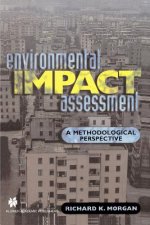
Environmental Impact Assessment
276.65 € -

Climate Justice
9.80 € -24 % -

Coming Home to the Pleistocene
34.23 € -7 % -

Green Utopias - Environmental Hope Before and After Nature
25.44 € -

Confessions of an Eco Sinner
19.92 € -13 % -

Planetary Health
53.13 € -

Man and the Natural World
12.25 € -23 % -

Value of Ecocriticism
26.05 € -

Countdown
18.69 € -13 % -

Seeking Spatial Justice
35.56 € -

Human Geography
57.73 € -

Green Utopias - Environmental Hope Before and After Nature
79.40 € -

Consuming Places
230.04 € -

Consuming Places
67.75 € -

Eco-city Planning
214.20 € -

America's Fight Over Water
204.70 € -

Human Planet
62.13 € -

Senses of Place
35.56 € -

Bausteine für Klimagerechtigkeit
18.49 € -4 % -

Creative (Climate) Communications
58.96 € -

Last Resorts
52.11 € -

Harmony
40.67 € -

Learning Toward an Ecological Consciousness
105.97 € -3 % -
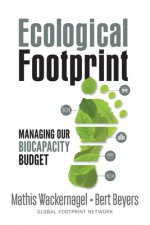
Ecological Footprint
20.94 € -2 % -

Assessing Impact
81.65 € -

Global Environmental Problems
120.38 € -

Social Construction of Nature
178.33 € -10 % -

Beyond Ecophobia
12.56 € -13 % -

Wolf Conflicts
175.98 € -

Living Past
47.10 € -

Disrupting Breast Cancer Narratives
49.25 € -

Stories of the Great Turning
27.99 € -

China and the Environment
159.12 € -

Cities of Pleasure
204.70 € -

Environment and Social Theory
318.86 € -

Climate Change and Migration
42.91 € -

Ethnobotany of Pre-Columbian Peru
73.98 € -

Cultural Values and Human Ecology in Southeast Asia
36.07 € -

Environmental Impact
665.63 € -
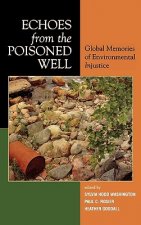
Echoes from the Poisoned Well
223.40 € -

Countdown
11.33 € -13 % -
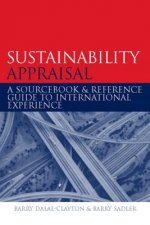
Sustainability Appraisal
325.19 € -
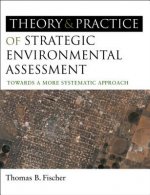
Theory and Practice of Strategic Environmental Assessment
74.70 € -

Poverty in Plenty
52.11 € -

Edge of the Sea
13.89 € -12 % -

Endgame Vol.1
21.04 € -5 %
Osobný odber Bratislava a 2642 dalších
Copyright ©2008-24 najlacnejsie-knihy.sk Všetky práva vyhradenéSúkromieCookies


 21 miliónov titulov
21 miliónov titulov Vrátenie do mesiaca
Vrátenie do mesiaca 02/210 210 99 (8-15.30h)
02/210 210 99 (8-15.30h)